| Home | Nature Weekly Index |
22 March 2020 | Hedyotis taiwanensis | Oldenlandia strigulosa |
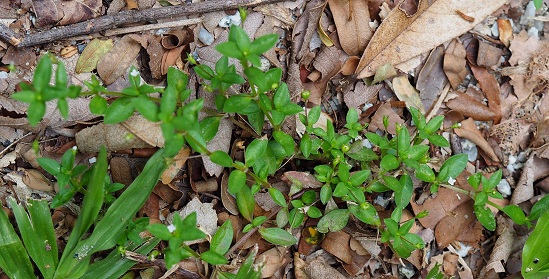 In February 2020, I came across an unknown weedy herbaceous plant that looked like
Oldenlandia biflora (Twoflower Mille Graines).
However, the difference was that the long flower stalk of the unknown plant was unbranched while that of
Oldenlandia biflora was branched with up to 3 flowers per stalk.
In February 2020, I came across an unknown weedy herbaceous plant that looked like
Oldenlandia biflora (Twoflower Mille Graines).
However, the difference was that the long flower stalk of the unknown plant was unbranched while that of
Oldenlandia biflora was branched with up to 3 flowers per stalk.
The search for its identity first landed on Hedyotis taiwanensis that was first reported from Taiwan in 1987 [1]. However, Hedyotis taiwanensis is a synonym of Oldenlandia strigulosa according to the Plant List website.
The plant that I saw looked similar to the picture from a Taiwan website but it was named “Leptopetalum taiwanense (Hedyotis taiwanensis)”. According to a 2017 publication [2], Taiwan has 17 species of plant in the Hedyotis-Oldenlandia complex. Both name from the above mentioned Taiwan website was not listed in this publication. Another Taiwan website with similar pictures named it as Hedyotis taiwanensis but with a remark that it was grouped under Hedyotis strigulosa var. parvifolia. This variant name was listed in the publication. The Plant List website indicated Hedyotis strigulosa var. parvifolia as a synonym of Oldenlandia strigulosa.
The very few available evidence seemed to point to Oldenlandia strigulosa (Rough Oldenlandia) as the name of this newly discovered plant. The Flora of China website described the inflorescences (flower) as 1-flowered or 2-12-flowered and peduncles (flower stalk) up to 1.5 centimetres. The unknown plant had 1-flowered inflorescences. There were very few pictures of this plant online. The picture of Hedyotis strigulosa in a Taiwan website looked more like Leptopetalum strigulosum.
I would therefore name this plant as Oldenlandia strigulosa for the time being.
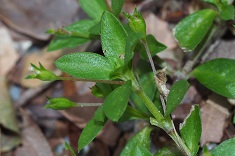
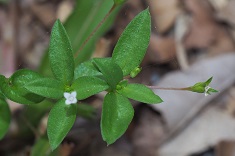
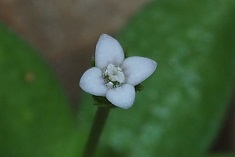
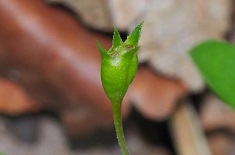
Based on a recent update of the Rubiaceae family in Singapore published in 2019 [3] by National Parks Board, we have 14 native species from the Hedyotis-Oldenlandia complex. The authors indicated that the species may be divided into 7 genera. But, for the purpose of general use, all 14 species were grouped under the genus Hedyotis in the current update.
References:
[1] Huang SF, Murata J. Hedyotis Taiwanese (Rubiaceae), a new species from Taiwan. Taiwania 1987;32(1):214-217. | Read article |
[2] Hsu TC, Chen ZH. Scleromitrion sirayanum (Rubiaceae: Spermacoceae), a new species of the Hedyotis-Oldenlandia complex in Taiwan. Taiwania 2017;62(2):151-156. | Read article |
[3] Wong KM, Turner IM, Wang RJ, Harwood R, Seah WW, Ng XY, Lim RCJ, Lua HK, Mahyuni R. Rubiaceae. Flora of Singapore 2019;13:1-358. | Read article |
Update: 14 November 2022
After further investigation, the plant is more likely to be Oldenlandia pumila. In a 2020 publication [1] from Hong Kong, there was a set of pictures that looked very similar to the plant that I saw. The name of this plant is Oldenlandia pumila.
Pictures of the live plant is rare online. The other picture available is from the Flora of Peninsular India website. The only picture there showed a plant with a narrower leaf compared to mine. There was no observation in the iNaturalist website when I did a search on 14 November 2022.
Reference:
[1] Wang RJ, Jiang GB. New record of the Rubiaceous plants for the flora of Hong Kong. J Trop Subtrop Bot 2020;28(2):197-200. | Read article |
Update: 18 February 2023
Finally, there were pictures of Oldenlandia pumila from Singapore posted in the iNaturalist website. It was sighted by Ethan on 30 November 2022 at the northern side of Singapore.